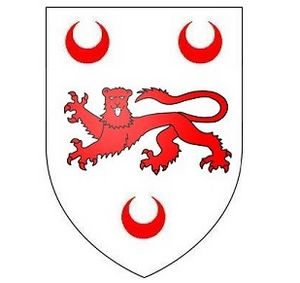Charles Dillon, 14th Viscount Dillon facts for kids
Quick facts for kids
Charles Henry Dillon-Lee
|
|
|---|---|
| Viscount Dillon | |
 |
|
| Tenure | 1832–1865 |
| Predecessor | Henry, 13th Viscount Dillon |
| Successor | Theobald Dominick Dillon-Lee |
| Born | 20 April 1810 Ely Place, Dublin |
| Died | 18 November 1865 Ditchley |
| Buried | All Saints Church, Spelsbury |
| Spouse(s) | Lydia Sophia Story |
| Issue Detail |
Ethelred Florence & Geraldine Lee Frances |
| Father | Henry, 13th Viscount Dillon |
| Mother | Henrietta Browne |
Charles Henry Dillon-Lee (1810–1865) was the 14th Viscount Dillon. He was an important landowner in both Ireland and England. He lived at Ditchley in Oxfordshire, England. His lands in Ireland were managed by his agent, Charles Strickland.
Contents
Early Life and Family
Charles was born on April 20, 1810, in Ely Place, a street in Dublin, Ireland. His father was Henry Augustus Dillon-Lee, the 13th Viscount Dillon. His mother was Henrietta Browne.
The Dillon family was an old and well-known family in Ireland. They were called "Old English" because their ancestors came to Ireland from England a very long time ago. Sir Henry Dillon, one of their first family members, arrived in Ireland with Prince John in 1185. Charles was one of ten children.
Becoming a Viscount
On July 26, 1832, Charles became the 14th Viscount Dillon after his father passed away. This meant he inherited a lot of land in both Ireland and England.
The Irish lands had been in his family for a long time, since the 1600s. These lands were in the counties of Mayo, Roscommon, and Westmeath. The English lands, located in Oxfordshire, were a more recent addition to the family's property. They were inherited through a marriage in 1744.
Marriage and Children
On February 1, 1833, Lord Dillon married Lydia Sophia Story. Her grandfather was Sir Francis Baring, who started a famous bank in London called Barings. Charles and Lydia got married at Tusmore House in Oxfordshire, England.
Charles and Lydia had two daughters:
- Ethelred Florence (died 1910), who never married.
- Geraldine Lee Frances (died 1920), who married Captain Charles Augustus Drake Halford in 1859.
Helping During the Great Famine
From 1845 to 1849, Ireland faced a terrible time known as the Great Famine. Many people suffered from hunger and disease. Lord Dillon's lands in Ireland were in some of the areas hit hardest by the famine.
Even though Lord Dillon lived in England and was not always present on his Irish estates, he and his manager, Charles Strickland, were known for being kind and helpful. They tried to support their tenants instead of forcing them off their land.
A beautiful stained-glass window in the Cathedral of the Annunciation in Ballaghaderreen, County Roscommon, remembers Lord Dillon. It celebrates his fairness as a landlord during the famine. His wife donated this window. Another window in the same cathedral honors his agent, Charles Strickland.
When Lord Dillon's tenants in Mayo faced unfair treatment at the market in Bellaghy, Charles Strickland decided to build a new town. He started building Newtown Dillon in County Mayo in 1846. This town was soon renamed Charlestown in honor of Charles Strickland.
Death
Lord Dillon passed away on November 18, 1865, at the age of 55. He died at Ditchley, his family home near Charlbury in Oxfordshire. After his death, his younger brother, Theobald Dominick, became the 15th Viscount Dillon.
A monument with a white marble statue of Lord Dillon was placed in the All Saints Church in Spelsbury, Oxfordshire. It was created by a sculptor named Charles Francis Fuller.
Images for kids


